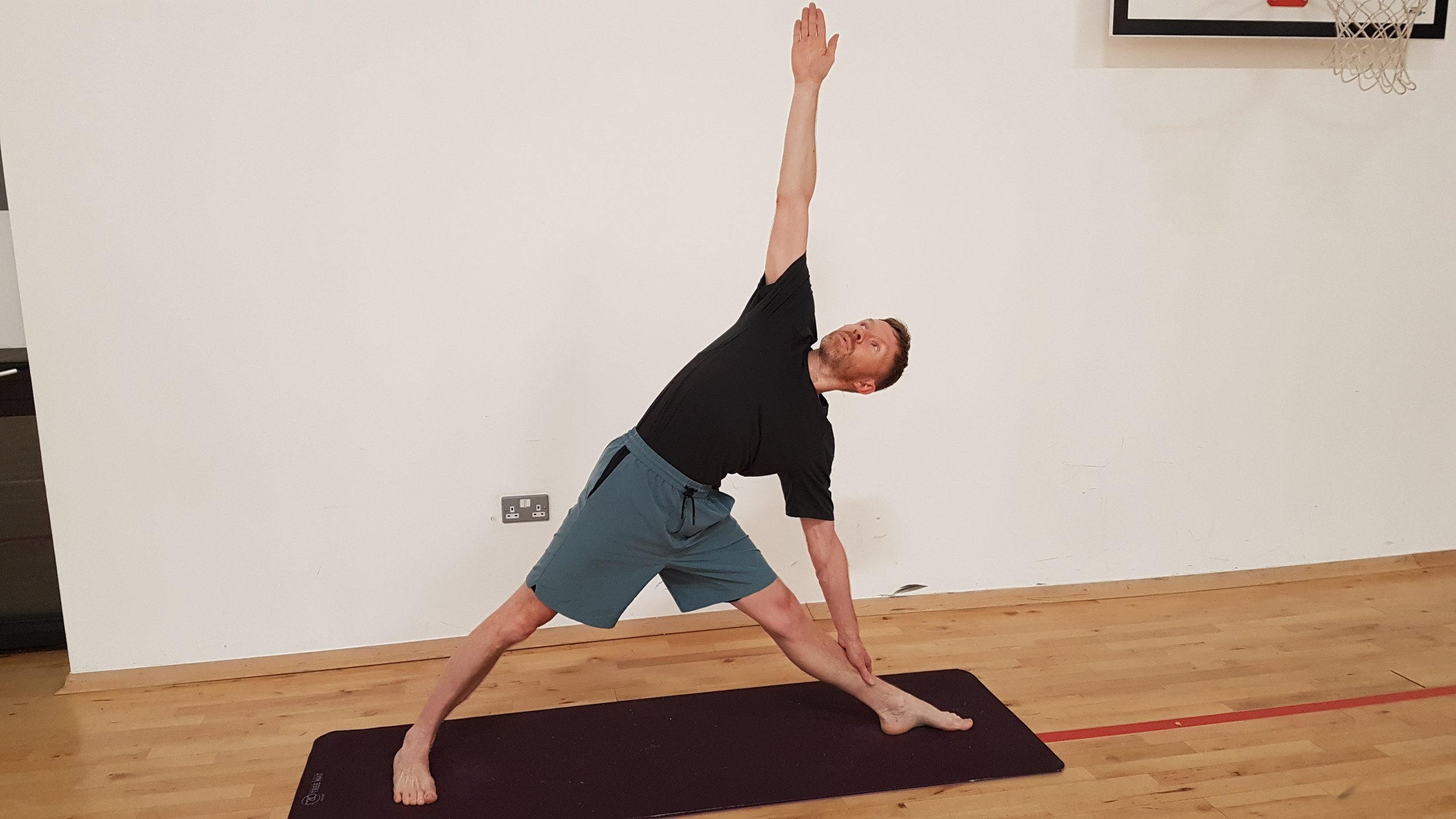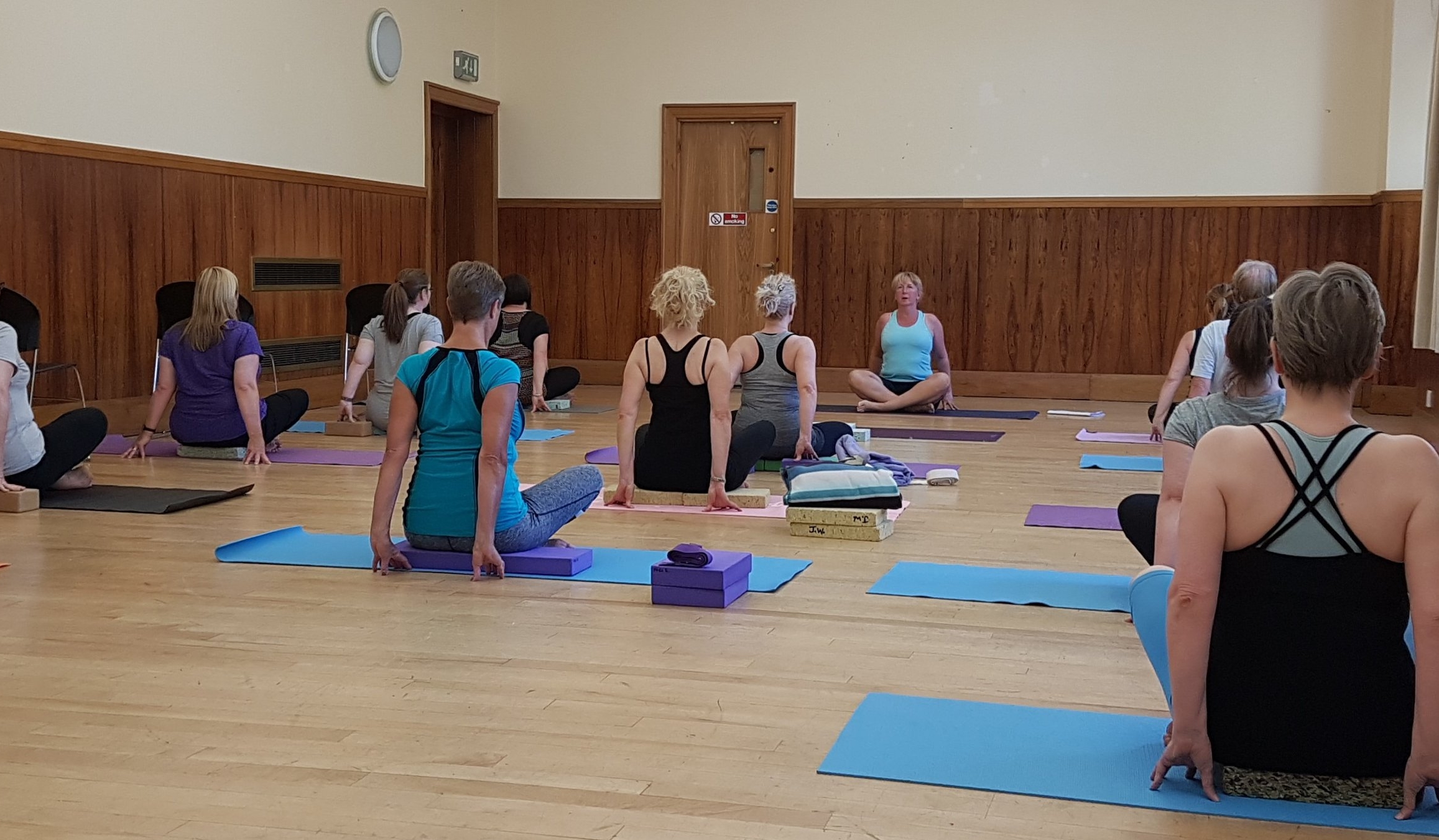
Sitting in swaztikasana (crossed legs)
We begin our classes sitting with crossed legs and hands in namaste. We lift the spine and with closed eyes, focus on our breath for a few moments. This helps quieten the body and mind before the class begins.
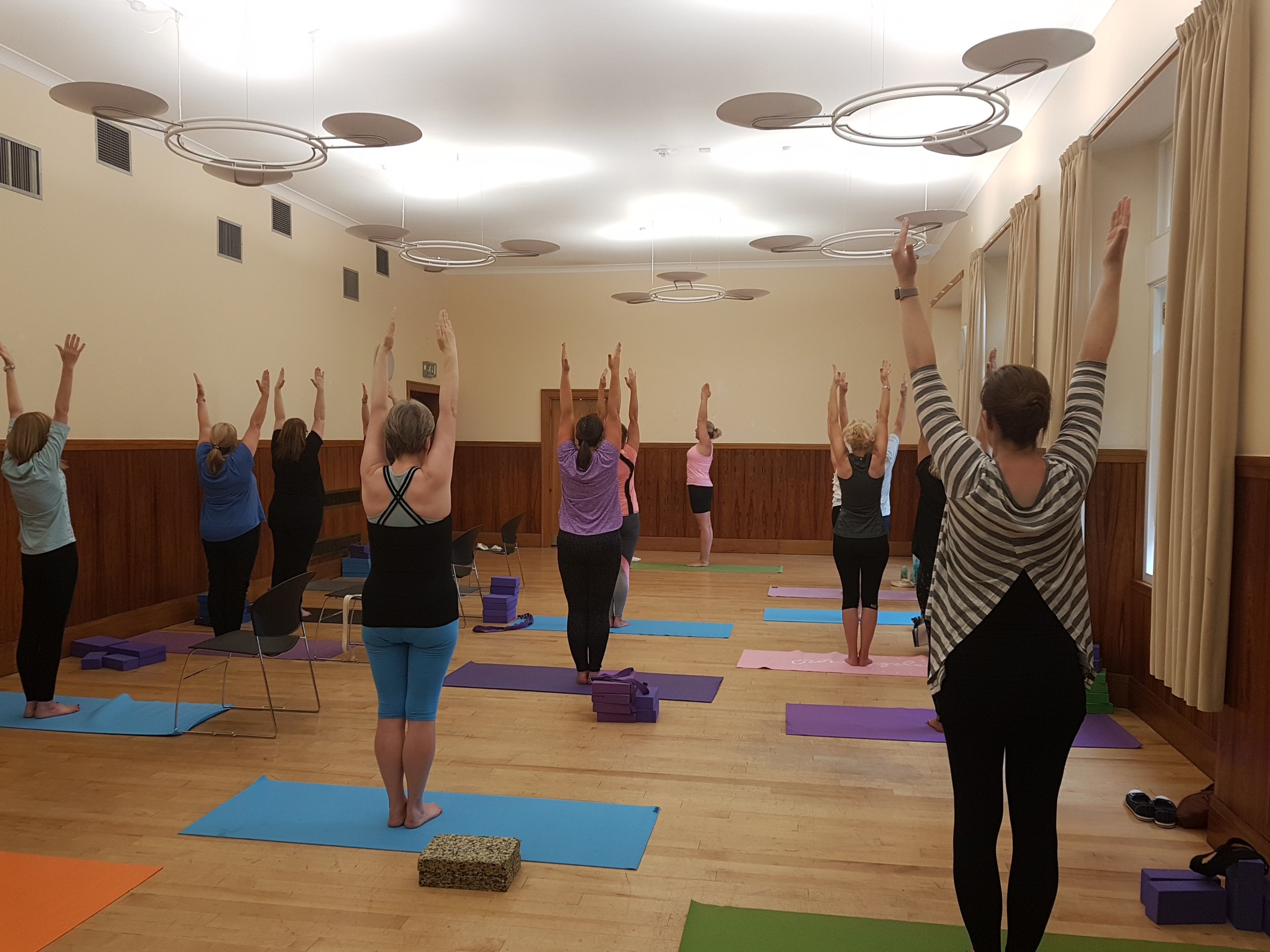
Urdhva hastasana
First stretch of the body, lifting arms up above the head.

Gomukhasana
This is the arms only, the full pose is a seated posture which can be tricky for the legs, so beginners learn the arms of Gomukhasana first. Its very good for stretching the shoulders.
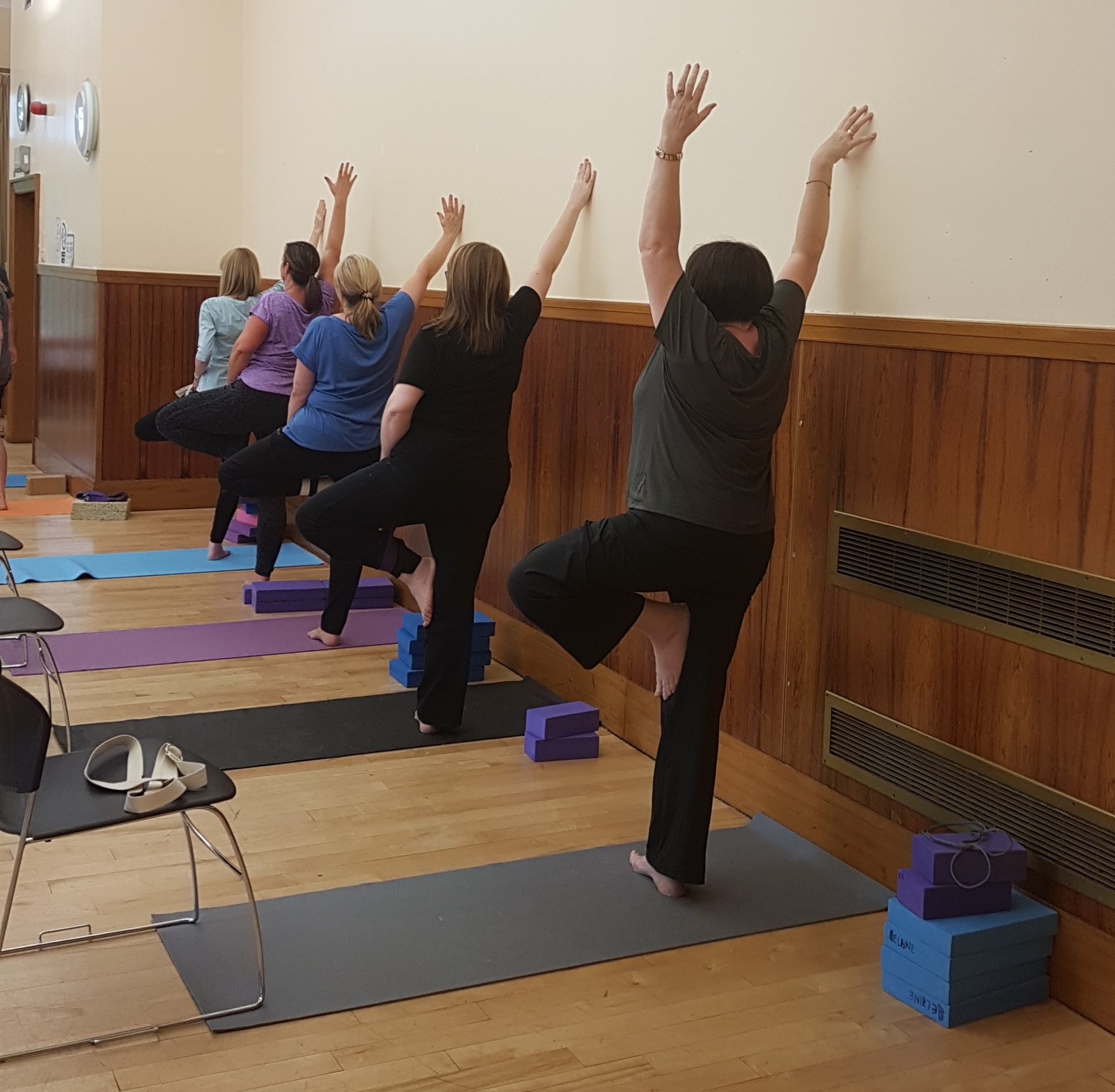
Vrksasana
Using the wall for support in vrksasana and a belt is looped around the ankle to hold foot in place.
Known as ‘tree pose’. Balancing postures require a quietness of mind, focus is necessary to maintain steady balance.
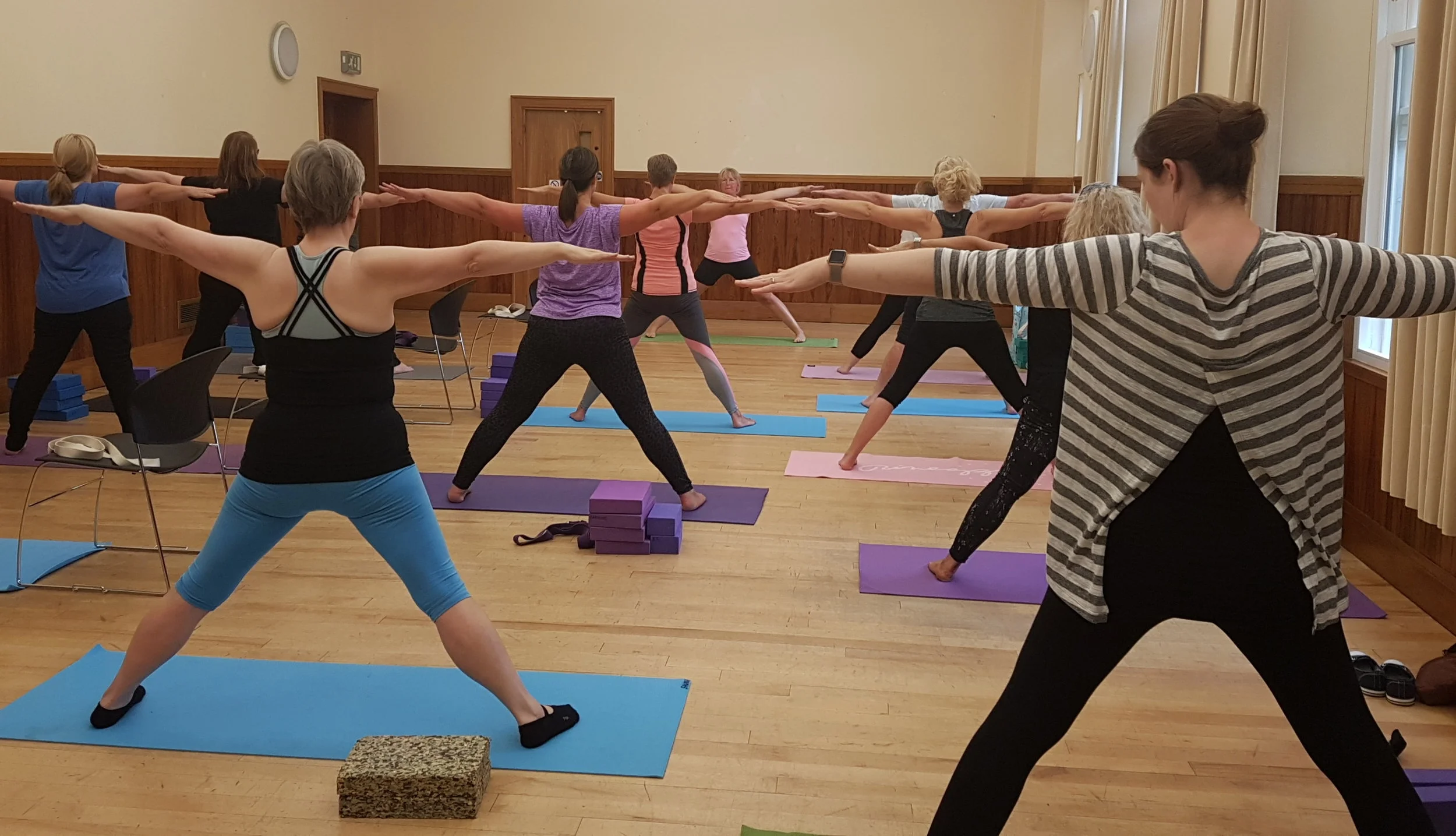
Utthita hasta padasana
Most standing poses begin and end by moving through this pose.
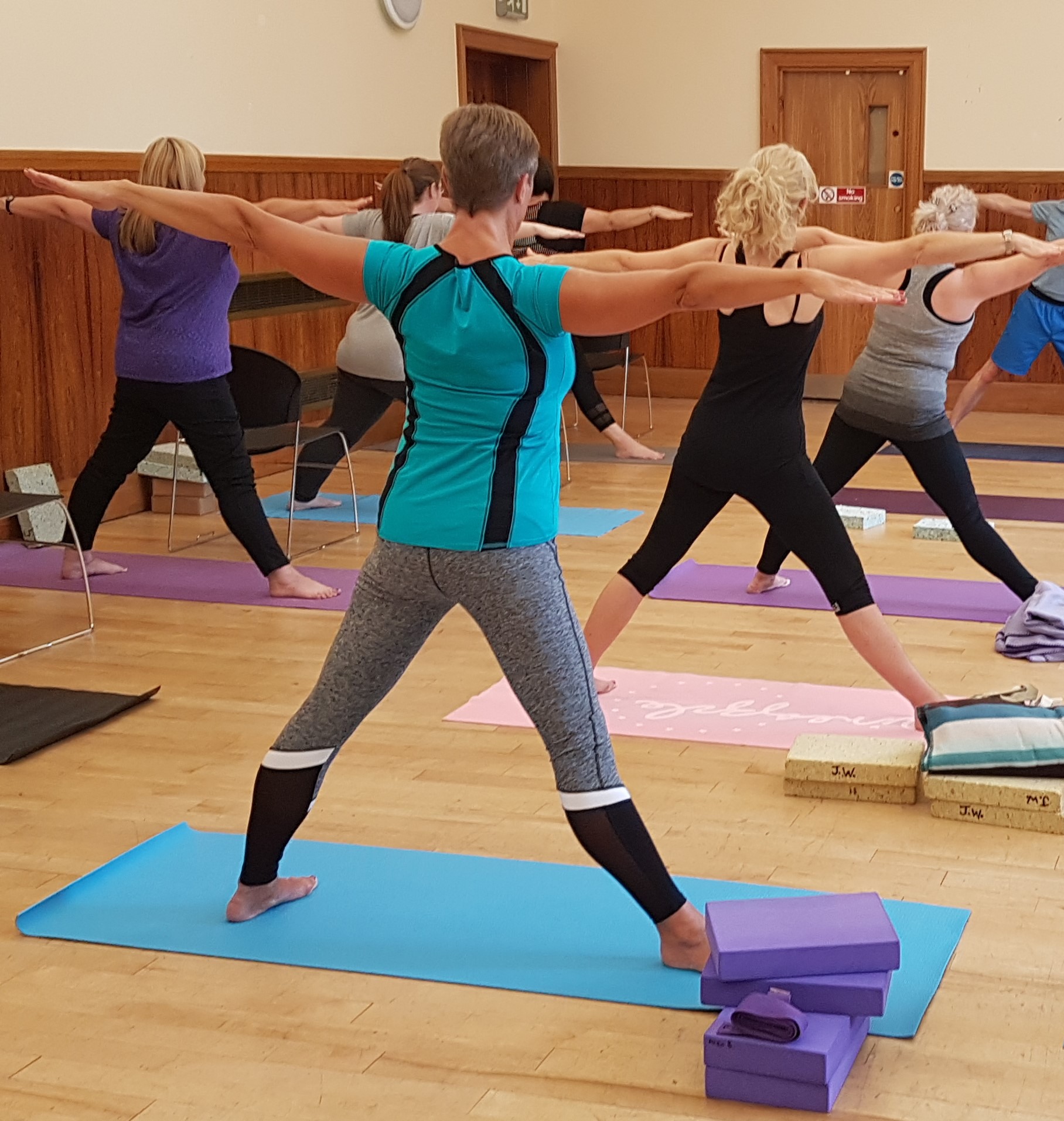
Parsva hasta padasana
Here the front foot is rotated 90 degrees and back foot angled in slightly.
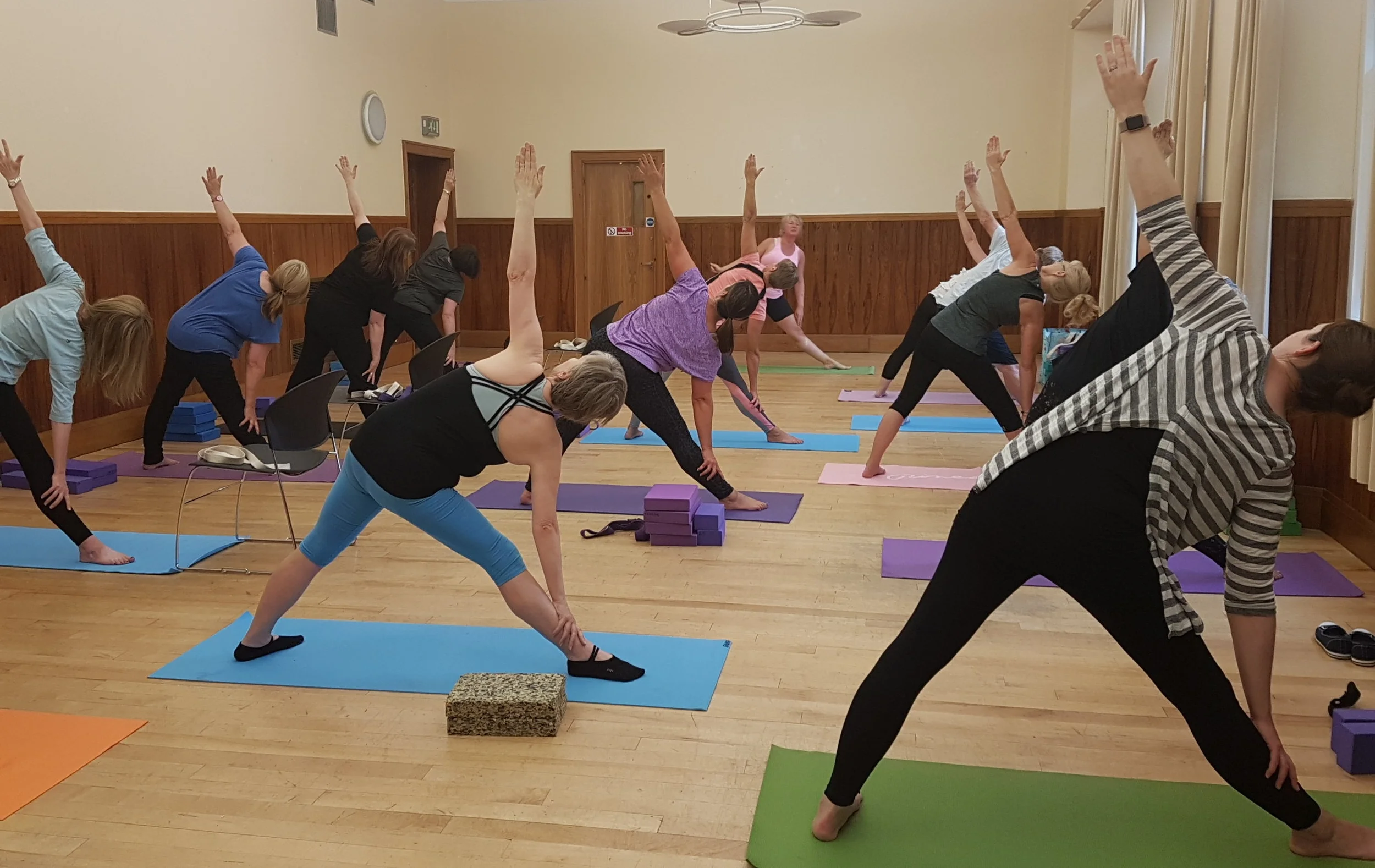
Trikonasana
Known as triangle pose, there are 3 triangles created by the body.
Excellent warm up and basic standing pose learned by all beginners, then refined as your practice progresses.
This posture is enlivening, it strengthens the legs, mobilises the hips, stretches the torso and opens the chest for better breathing.
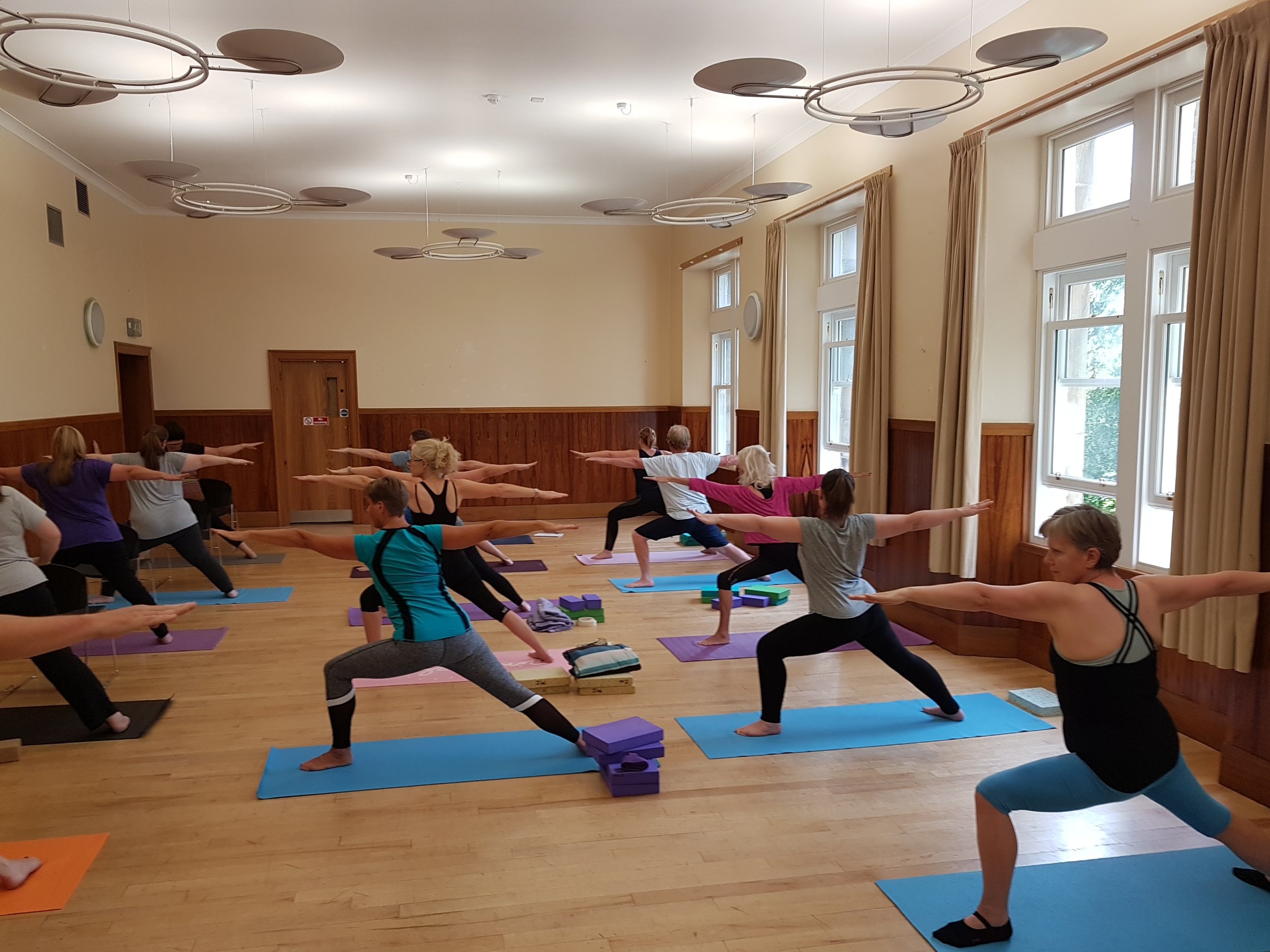
Virabhadrasana II
Known as warrior 2. The aim is to keep the trunk vertical whilst the leg bends.
The effect of this asana is strengthening and focussing, it connects us to the power of our legs. It makes us feel heroic and can restore a feeling of confidence.
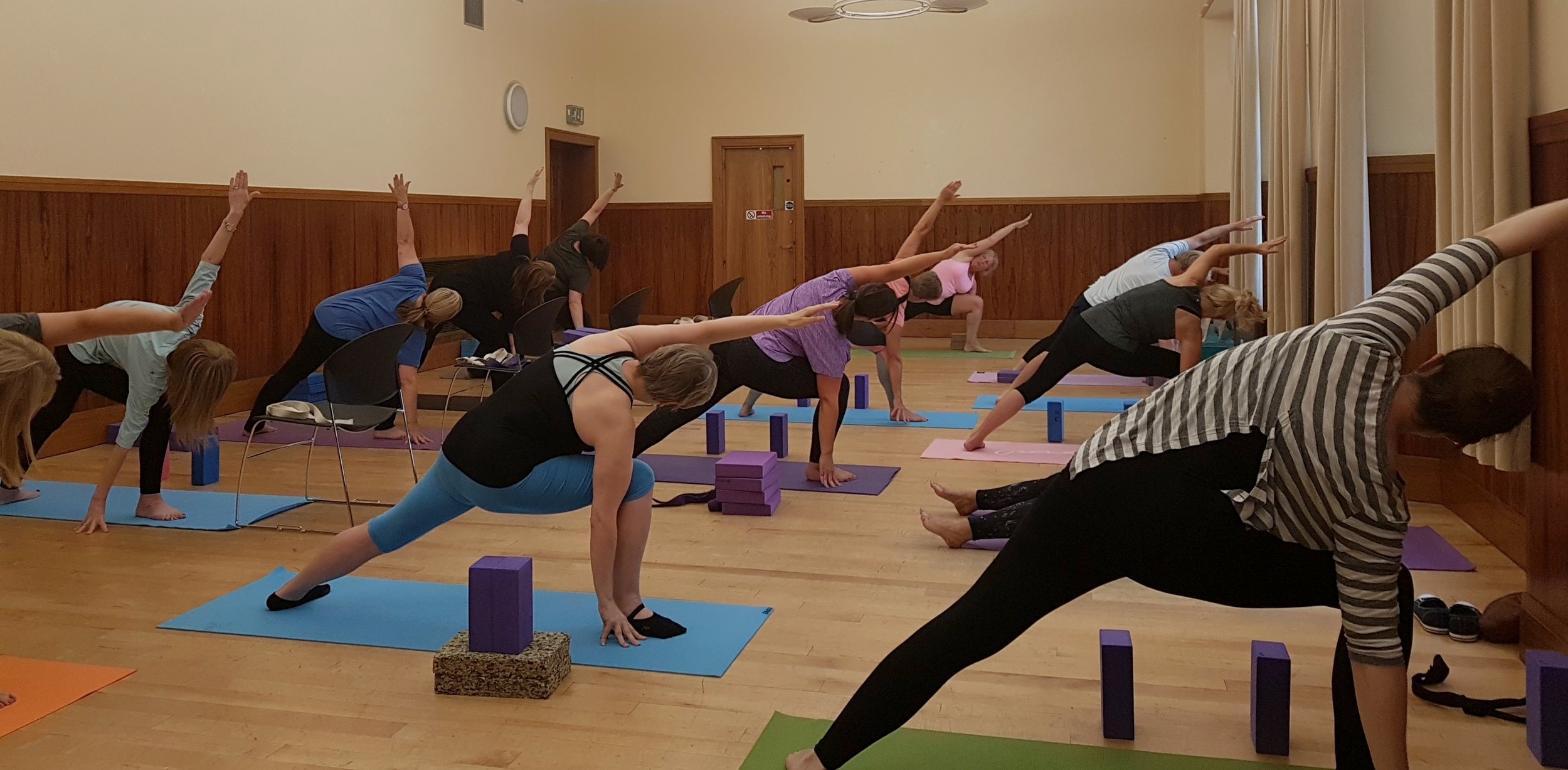
Utthita parsvakonasana
Known as a ‘standing side stretch’. This can be achieved in stages and with equipment to help everyone access this stretch.
The effect of this posture is grounding and opening. It engages our thigh muscles, awakens the inner leg from the groin.
We bend forwards and backwards often everyday, this side stretch is done less so.
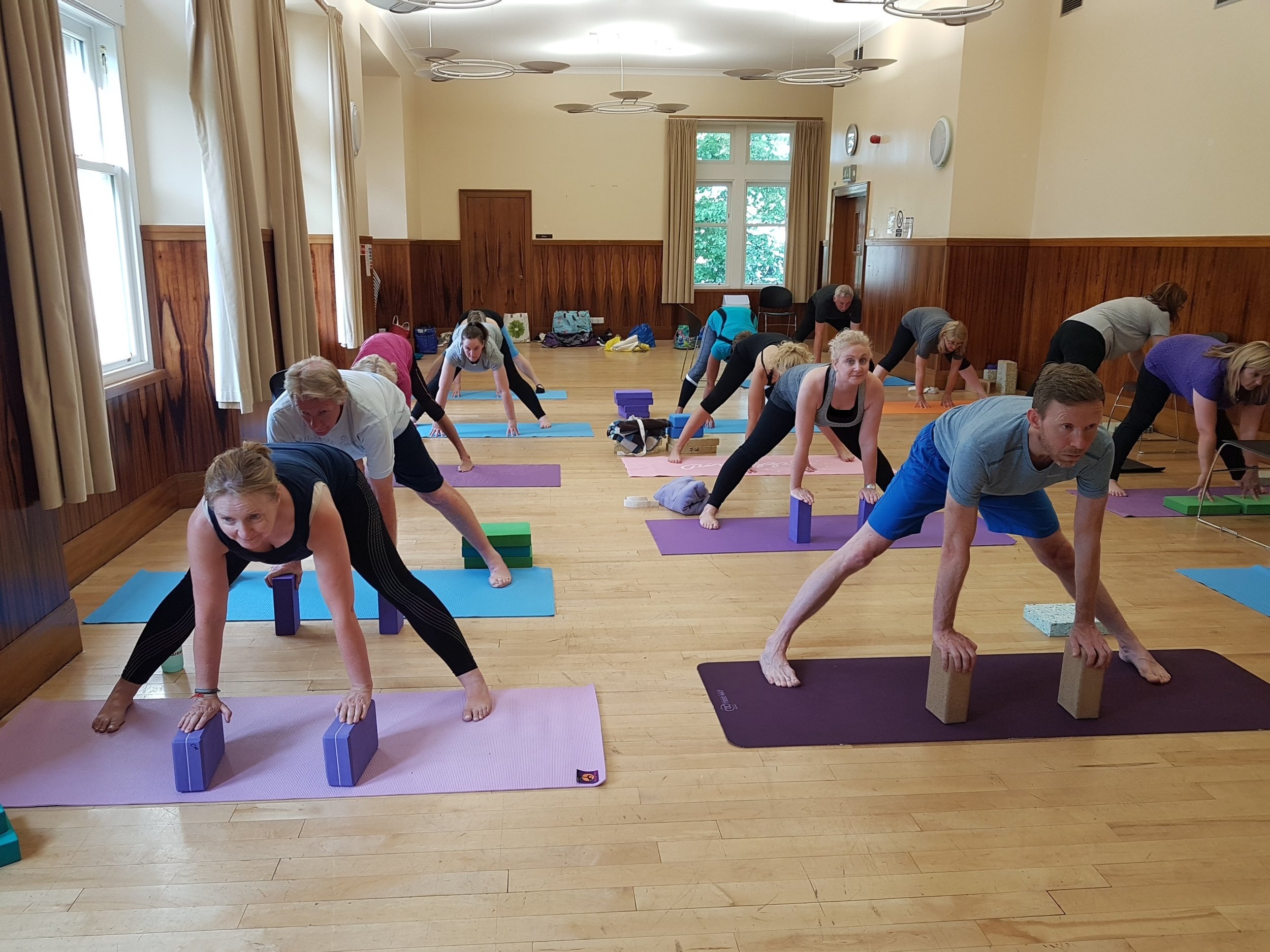
Prasaita Padottanasana
The effect of this pose is expansive. Spreading the legs as far as they are able to stretch is immensely satisfying and it expands the shape of who we are in the outside world.
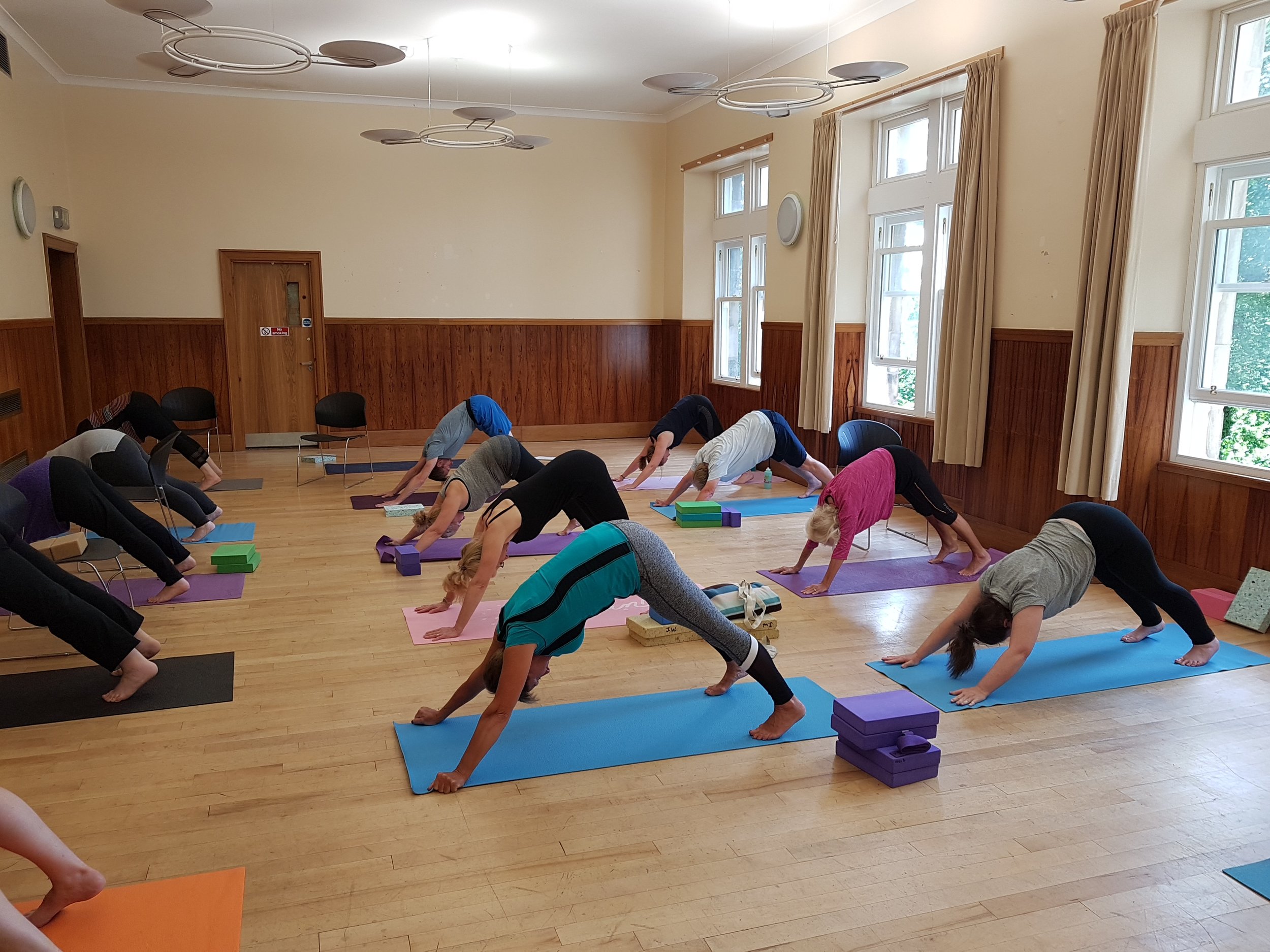
Adho mukha svanasana
Known as ‘head down dog’. This full body stretch can also be achieved using the hands or feet against the wall for support.
This is strengthening and invigorating, can remove fatigue and bring back energy. The spine, hamstrings and shoulders are vigorously stretched and the inversion encourages blood flow to the head.
Good for runners, relieves pain and stiffness in heels, strengthens ankles and gives you shapely legs. Helps to release stiff shoulder blades and arthritis in shoulder joints is relieved. Abdominals are drawn towards the spine and strengthened.
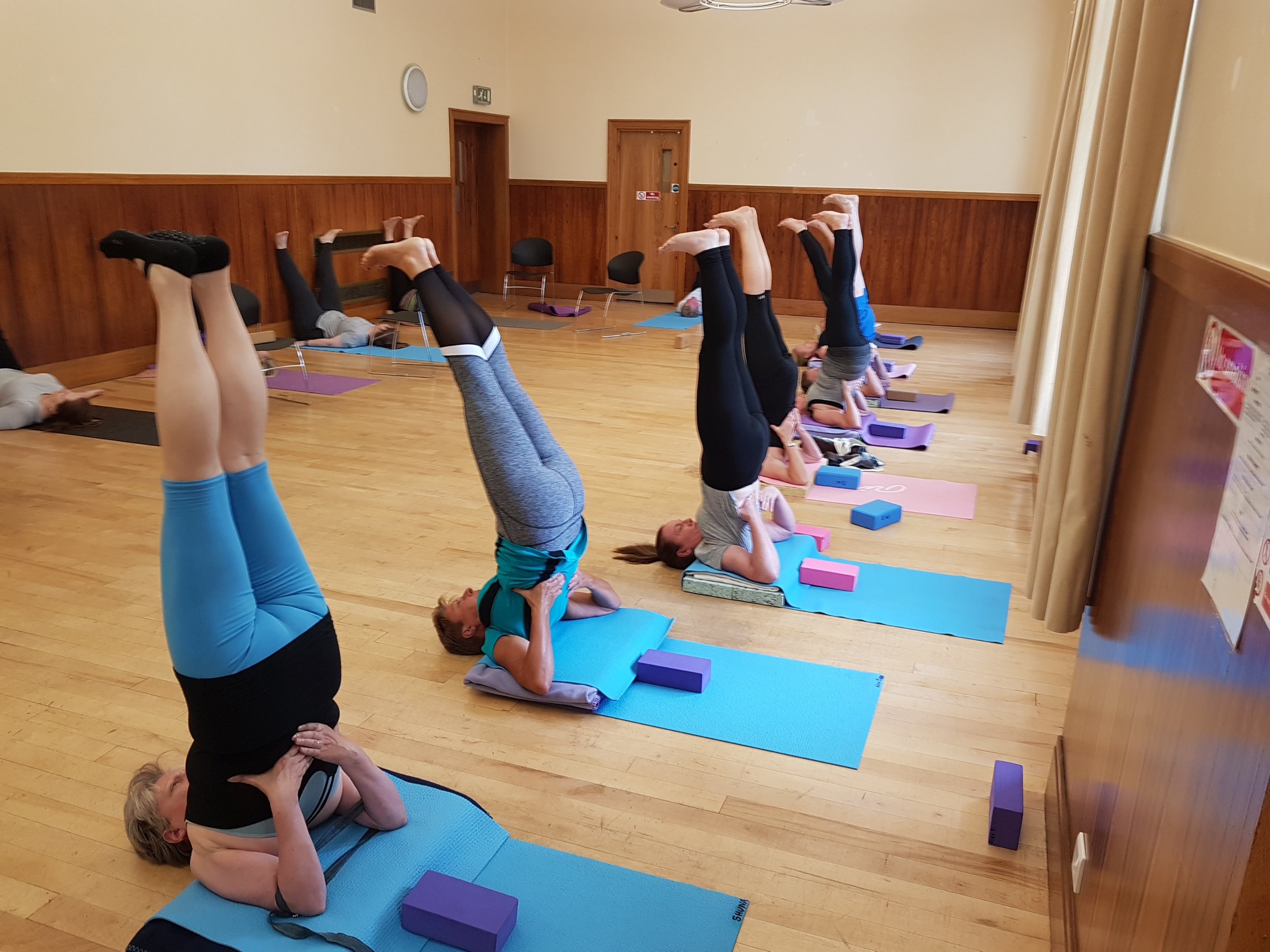
Salamba Sarvangasana
Known as ‘shoulder balance’. This pose is the first inversion we are introduced to after at least 6 months of regular practice.
The effect is balance and poise both physically and mentally. It calms the nervous system, nourishes brain cells, stimulates heart and circulation. It balances hormonal and digestive systems and strengthens the spirit.
Its good for people whose brains tire quickly, due to the healthy pure blood flow to the brain cells.
Inversions relieve colds, coughs, tonsillitis, halitosis, helps constipation and the haemoglobin content of the blood.
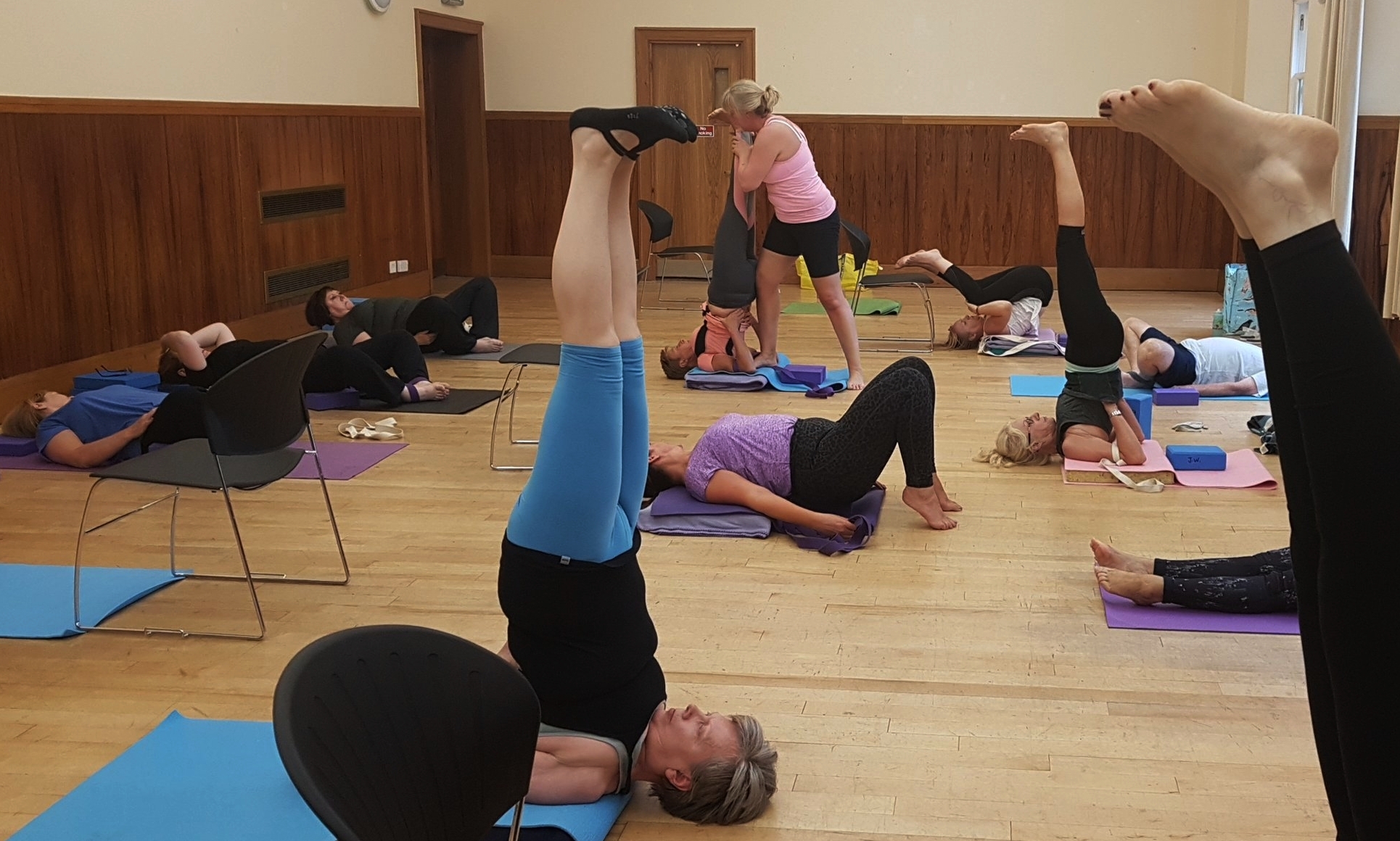
Salamba Sarvangasana
Iyengar yoga uses specific equipment to create a raise for the neck and shoulders to protect the neck, making this inversion safe and comfortable.
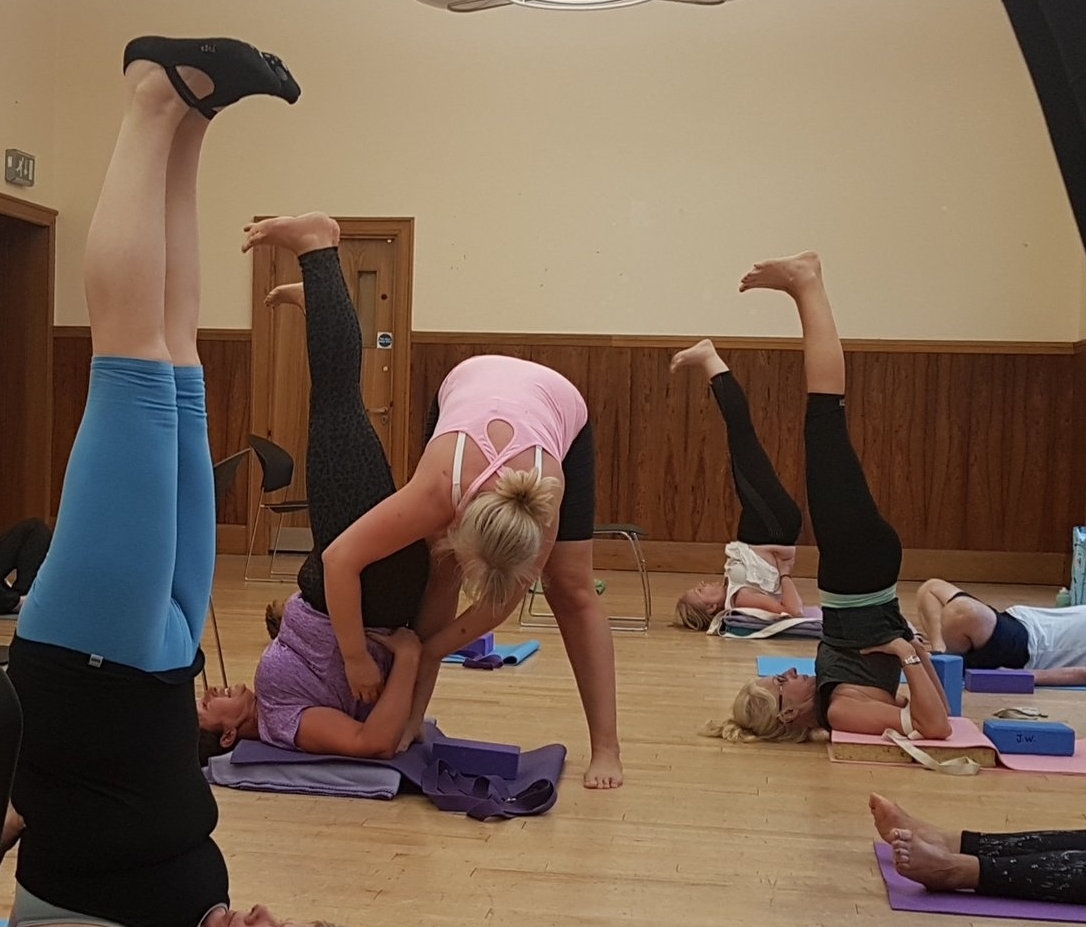
Salamba sarvangasana
You have to lift and support your own back as close to the shoulder blades as possible.
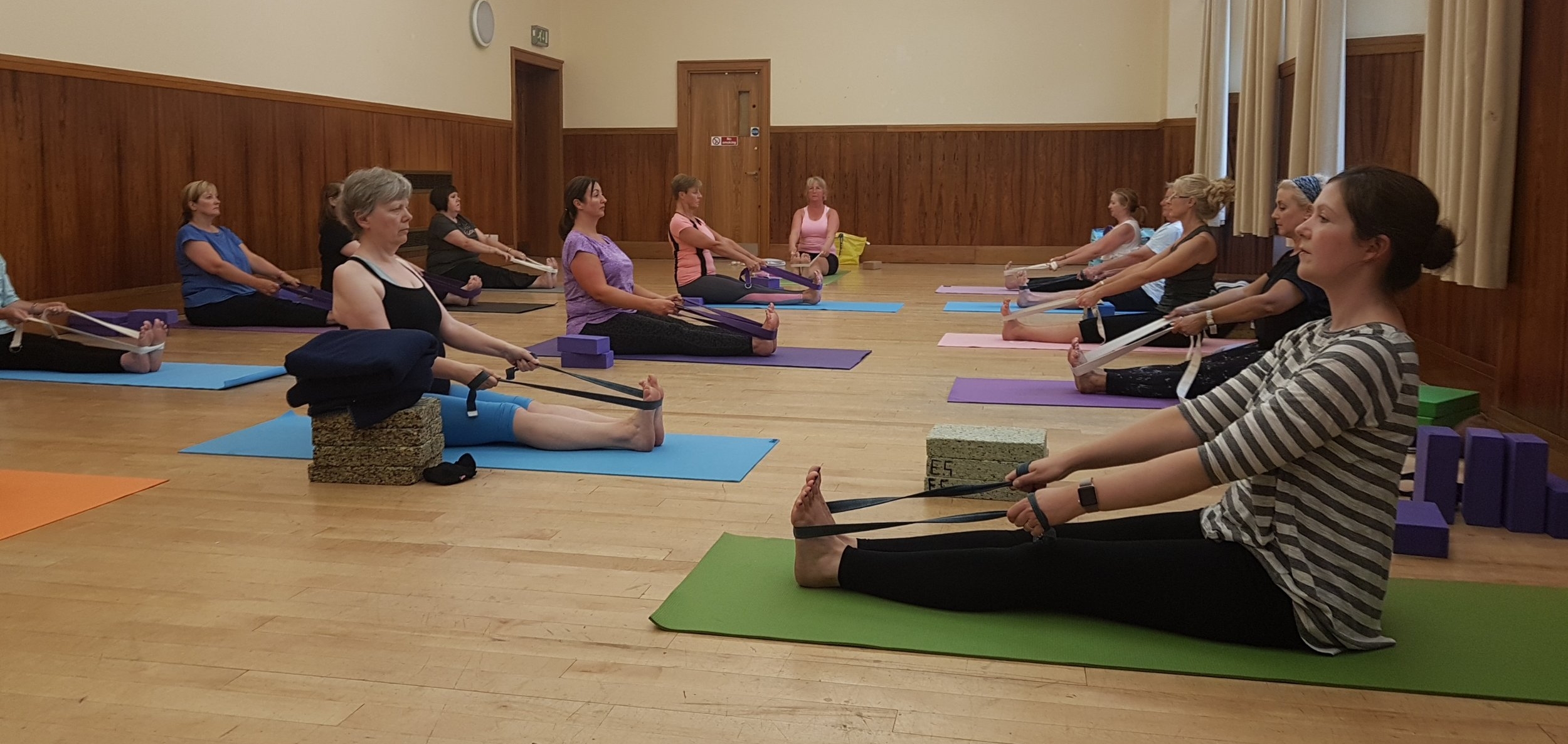
Padangustha Dandasana
Here we are using belts to get a lift in the chest and spine.
Seated asanas have a calming effect on the body as well as awakening the entire body. They challenge us to pay attention to detail.
Relief can come to those who feel a bloating sensation in the abdomen due to gas or gastric issues. Its reduces fat around the waist and tones the kidneys.
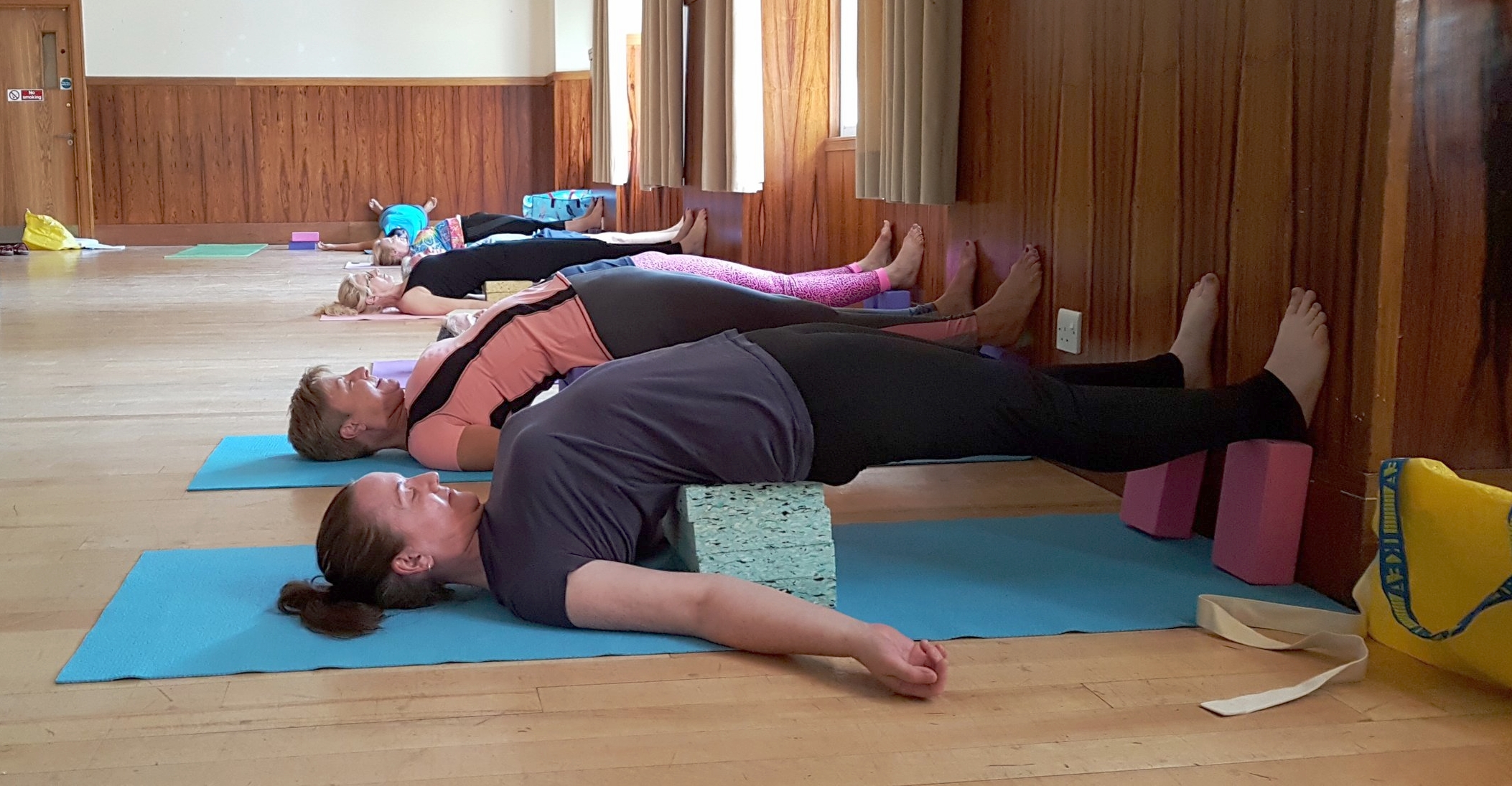
Setubhanda sarvangasana
This supported version is introduced to beginners. The stretch of the front abdomen, and spine along with the opening of the chest makes this a calm, healing posture. It soothes the nervous system and calms the brain. As well as making the spine flexible, it strengthens the back and stretches the neck, spine and hips. This asana prepares us for more back bending postures. It stimulates the lungs, thyroid glands, abdominal organs and improves digestion.
